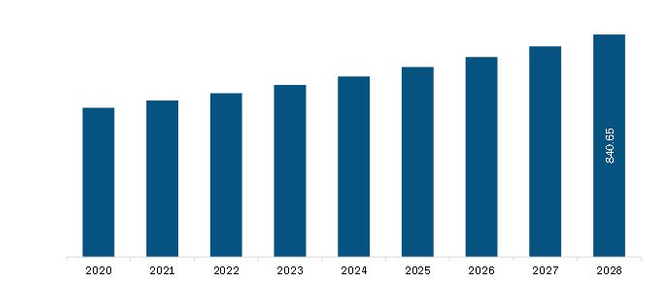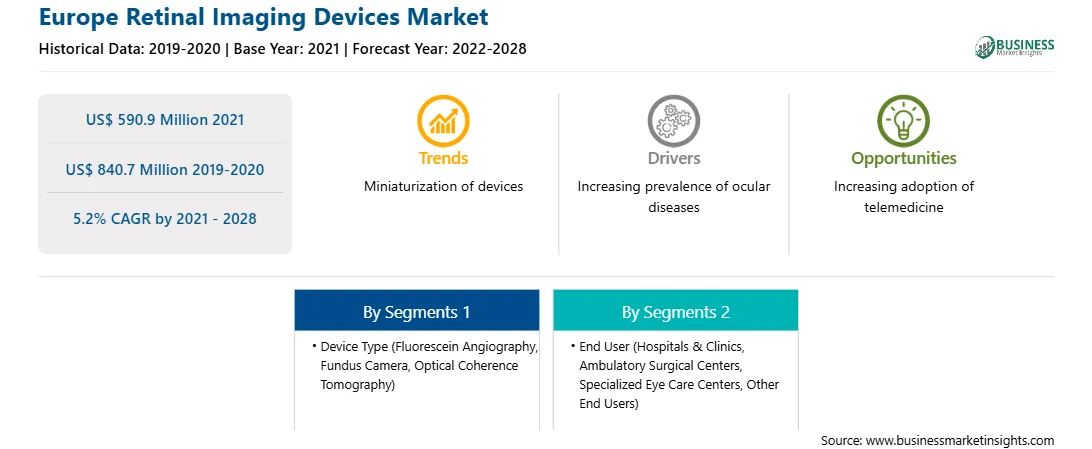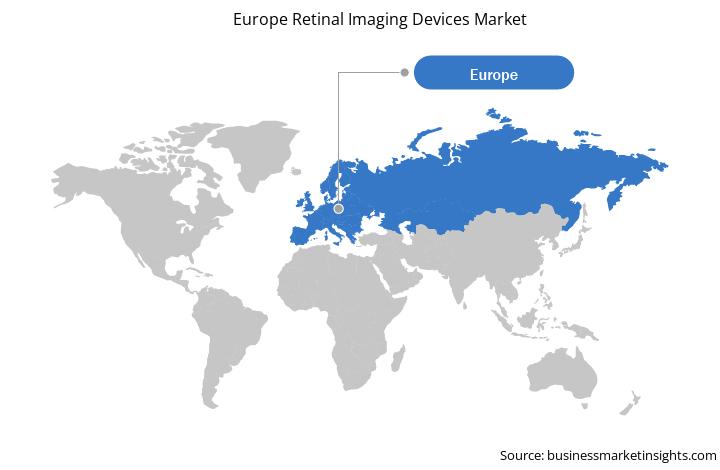The rise in healthcare expenditure across the region has resulted in rapid technological advancement in ophthalmology. The innovation has combined digital technology with clinical diagnostics and imaging for eye diseases. It has provided several advantages, such as non-invasive, quick, and safe imaging. It has also provided detailed images of the retina and sub-surface of eyes, instant, direct imaging of the eye form and structure, high-quality imaging through the use of eye-safe near-infra-red light.
A few techniques, such as providing digital retinal imaging & OCT scans, are the latest advancement and widely used imaging technologies in OCT. The technology is similar to an ultrasound that utilizes sound waves and light without radiation to obtain high-resolution images of the structural layers at the back of the eye. OCT is necessary for the early diagnosis of macular degeneration, glaucoma, and diabetic retinopathy. It provides color-coded, cross-sectional images of the retina, which assists in preventing vision impairment or blindness.
The COVID-19 outbreak caused severe disruption in the Europe retinal imaging devices market. For instance, according to Optomed's financial 2020, the devices segment's revenue decreased by 30.3%. The decrease resulted from the COVID-19 pandemic causing a decline in OEM sales.
Additionally, appointments and operations were delayed in many clinics worldwide due to increasing cases, as approximately 40% of the diagnosed COVID-19 cases required hospitalization, and some critical patients were admitted to intensive care units (ICU). According to an article in Vascular News, in the first week of the pandemic outbreak, there was an 80% reduction in beds and an 84% reduction in operating rooms for elective procedures, with 43% of hospitals in Italy not doing any elective surgery.
With the number of rising cases, there was a significant decrease in procedures due to a lack of healthcare resources. It also affected the new product launches, impacting sales and growth of the market in the region. However, with the European Commission's proper guidelines and protocols to reduce SARS-CoV-2 exposure and easing restrictions on movement due to large-scale COVID-19 vaccine drives, the market is expected to grow in the forecast period.
With the new features and technologies, vendors can attract new customers and expand their footprints in emerging markets. This factor is likely to drive the Europe retinal imaging devices market at an attractive CAGR during the forecast period.

Strategic insights for the Europe Retinal Imaging Devices provides data-driven analysis of the industry landscape, including current trends, key players, and regional nuances. These insights offer actionable recommendations, enabling readers to differentiate themselves from competitors by identifying untapped segments or developing unique value propositions. Leveraging data analytics, these insights help industry players anticipate the market shifts, whether investors, manufacturers, or other stakeholders. A future-oriented perspective is essential, helping stakeholders anticipate market shifts and position themselves for long-term success in this dynamic region. Ultimately, effective strategic insights empower readers to make informed decisions that drive profitability and achieve their business objectives within the market.

| Report Attribute | Details |
|---|---|
| Market size in 2021 | US$ 590.9 Million |
| Market Size by 2028 | US$ 840.7 Million |
| Global CAGR (2021 - 2028) | 5.2% |
| Historical Data | 2019-2020 |
| Forecast period | 2022-2028 |
| Segments Covered |
By Device Type
|
| Regions and Countries Covered | Europe
|
| Market leaders and key company profiles |
The geographic scope of the Europe Retinal Imaging Devices refers to the specific areas in which a business operates and competes. Understanding local distinctions, such as diverse consumer preferences (e.g., demand for specific plug types or battery backup durations), varying economic conditions, and regulatory environments, is crucial for tailoring strategies to specific markets. Businesses can expand their reach by identifying underserved areas or adapting their offerings to meet local demands. A clear market focus allows for more effective resource allocation, targeted marketing campaigns, and better positioning against local competitors, ultimately driving growth in those targeted areas.

The Europe Retinal Imaging Devices Market is valued at US$ 590.9 Million in 2021, it is projected to reach US$ 840.7 Million by 2028.
As per our report Europe Retinal Imaging Devices Market, the market size is valued at US$ 590.9 Million in 2021, projecting it to reach US$ 840.7 Million by 2028. This translates to a CAGR of approximately 5.2% during the forecast period.
The Europe Retinal Imaging Devices Market report typically cover these key segments-
The historic period, base year, and forecast period can vary slightly depending on the specific market research report. However, for the Europe Retinal Imaging Devices Market report:
The Europe Retinal Imaging Devices Market is populated by several key players, each contributing to its growth and innovation. Some of the major players include:
The Europe Retinal Imaging Devices Market report is valuable for diverse stakeholders, including:
Essentially, anyone involved in or considering involvement in the Europe Retinal Imaging Devices Market value chain can benefit from the information contained in a comprehensive market report.